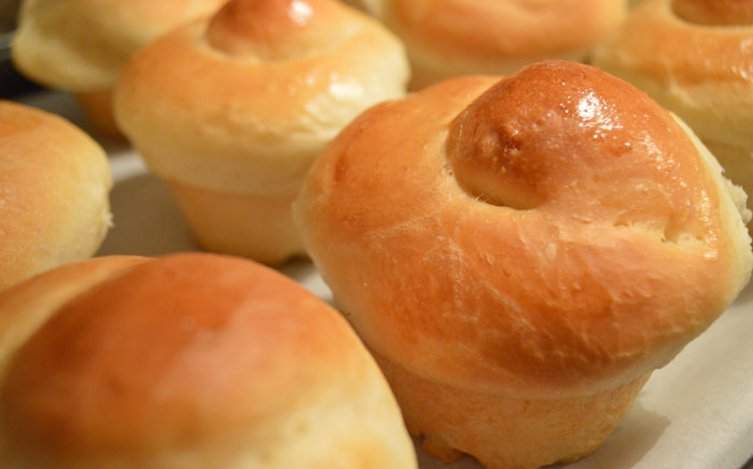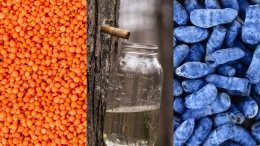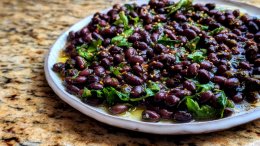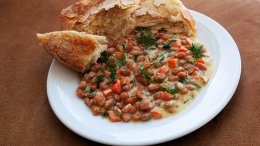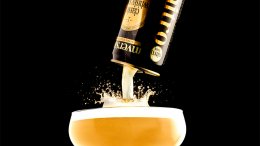While the carb lover in us doesn't give a rat's ass about the difference between bread, croissants, muffins and biscuits, there's a fundamental difference (besides shape and flavour) between all these baked goods: yeast.
Rather than relying on chemical leaveners like baking powder or baking soda to create those air pockets, bread uses yeast for its slow and steady reaction and its ability to develop structure, with the help of gluten. Baking powder and baking sodas react to water and acid, respectively, immediately and if you were to use them to make bread, the leaveners would be dead by the time the dough bakes, leading to flat and dense bread. Yeast also helps contribute to the unique texture of bread by aiding in the development of gluten. “Quick” breads made with chemical leaveners are much more crumbly (think Irish soda bread) because there is minimal gluten development at play.
Let’s take a closer look at this fascinating unicellular fungus!
What is yeast and why use it?
Yeast is virtually everywhere in the environment. Before the availability of commercial yeast, sourdough starters were made by simply mixing flour and water, leaving the mixture by the window, and allowing the yeast in the air to join the party and work its magic. In baking, yeast is a single-celled living organism that helps turn flour and water into bread. Unlike bacteria, yeast cells contain a nucleus, making them eukaryotic organisms, just like humans. Wild yeast is also found on certain grains and on grape skins, which is why many sourdough starters call for the addition of grapes to start the fermentation process.
Baker’s yeast belongs to the Saccaromyces cerevisiae species, a part of the fungi kingdom; which, in a way, makes yeast distantly related to mushrooms and truffles (but not the chocolate kind). “Saccaromyces” is the Latin term for “sugar-fungus” in Latin, which is apt because Baker’s yeast feeds off of sugar.
Yeast takes glucose and splits it into two pyruvate molecules through fermentation. Carbon dioxide molecules are then removed from the pyruvates, turning them into two acetaldehyde molecules. The acetaldehyde then gains some hydrogen molecules, creating two ethanol molecules. Hello? Are you still with us? OK, what you need to know is that yeast feeds off of the simple sugars that make up the carbohydrates in bread, forming both carbon dioxide and ethanol. Carbon dioxide causes the bread to rise, while ethanol contributes to its flavour. The ethanol is also what causes over-proofed bread to taste and smell alcoholic. This is great if you are making beer, but it's a fail if you're making bread.
Types of baker's yeast
There are three main forms of baker’s yeast used in the production of bread and other yeasted pastries (croissants, anyone?): dry active or active dry yeast, instant dry yeast and compressed or fresh yeast.
Active dry yeast comes in pellet form and has to be rehydrated in lukewarm water or milk to reactivate it before the addition of other ingredients to form the dough. It blooms best between 41-46 C or 105-115 F.
Instant dry yeast is similar to active dry yeast in that all of the moisture has been removed. However, it is much finer, can be added directly to other ingredients without rehydrating and will dissolve in mixtures where moisture is present. That being said, when working with a drier dough such as bagel, it is a good idea to hydrate the yeast first to ensure it is activated, as there may not be enough moisture in the dough to do the trick. Instant yeast grows best at 52-54 C or 125-130 F.
Compressed or fresh yeast comes in one pound blocks, similar to butter, except it has a crumbly and elastic texture by comparison. Because it is fresh, it needs to be refrigerated and used within two to three weeks. If it starts take on a slimy coating or sour odour, toss it in the trash. Fresh yeast grows at a much lower temperature than either of its dried counterparts, at 21-32 C or 70-90 F. This means that breads made with fresh yeast rise much more quickly.
So which type should you use? All three types will leaven bread dough, it’s just a matter of how long it takes. Fresh yeast is typically only used in commercial settings and is only available at specialty stores. Also, because it is highly perishable, fresh yeast must be used up quickly, which means that you'll need to make bread for the entire neighbourhood to use it up.
Active dry and instant dry yeast are essentially the same product, the only difference being the size of the pellets. Instant yeast does not necessarily require hydration but it's still a good idea to do so, especially in dry environments like the Prairie provinces. If you must choose, go with dry active. It only takes a few more minutes to bloom, but the dough takes less time to proof.
When substituting one for the other, use twice as much fresh yeast as active dry, or three times as much fresh as instant. Consistent with that, use half as much active dry as fresh, or a third of the amount of instant as fresh. Instant and active dry yeast can be substituted without adjusting the amount; just use a bit more active dry than instant and a bit less instant than active dry.
What kills yeast?
Because yeast is a living organism, it dies when heated to over 59 C or 138 F. This is fine when the bread is baking, as the yeast’s work is finished. But, you want to be careful not to rehydrate yeast with hot water (lukewarm will do) or proof your bread at temperatures above 59 C. Proof bread dough between 32-43 C or 90-110 F. If it gets too cold, the yeast can go dormant and not do its job.
Salt also kills yeast. Although you can mix yeast, sugar and water to reactivate it, never add salt directly to that mixture. Instead, add the salt to the rest of the ingredients.
References Labensky, S.R., Hause, A.M., Martel, P.A., Malley, F.L., Bevan, A., & Sicoli, S. (2012). On cooking: A textbook of culinary fundamentals (5th ed.). Toronto: Pearson.

